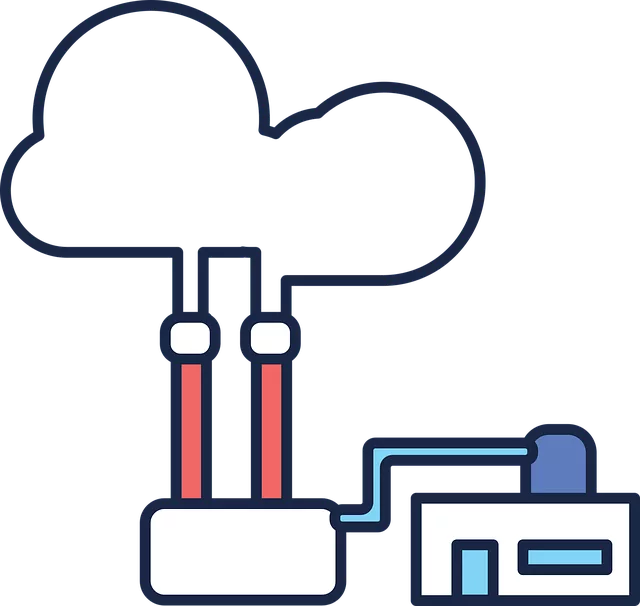Industrial ventilation systems are crucial for maintaining workplace air quality and ensuring employee safety by mitigating risks from hazardous materials and processes. Effective ventilation involves designing, implementing, and maintaining systems that meet established safety standards, preventing respiratory issues, fires, and chemical exposure. Regular monitoring, maintenance, and compliance with ventilation safety regulations are key to fostering a culture of safety, enhancing productivity, and protecting employees in industrial settings.
In today’s industrial landscape, effective industrial ventilation systems are not just amenities; they’re critical components of risk management. This comprehensive guide explores the multifaceted role of workplace air quality management in ensuring worker safety and compliance with ventilation safety standards. From understanding intricate industrial ventilation systems to implementing robust strategies for hazard identification and prevention, we delve into best practices that foster a safer, healthier environment. Learn from real-world case studies demonstrating the impact of successful ventilation risk management.
- Understanding Industrial Ventilation Systems: A Foundation for Risk Mitigation
- The Role of Workplace Air Quality Management in Ensuring Safety
- Ventilation Safety Standards: Legal Framework and Compliance
- Identifying Hazards: Assessing Risks Associated with Inadequate Ventilation
- Implementing Effective Ventilation Strategies to Prevent Occupational Illnesses
- Regular Maintenance and Inspection: Ensuring Optimal Performance of Ventilation Systems
- Case Studies: Lessons Learned from Successful Ventilation Risk Management
Understanding Industrial Ventilation Systems: A Foundation for Risk Mitigation
Understanding Industrial Ventilation Systems is a cornerstone in mitigating risks and ensuring workplace safety. These systems play a vital role in maintaining air quality by controlling, supplying, and exhausting air to create a safe and healthy environment for workers. In industrial settings, where hazardous materials or processes are involved, proper ventilation becomes an indispensable component of risk management.
Effective ventilation involves designing, implementing, and regularly maintaining systems that prevent the accumulation of toxic fumes, vapours, dusts, or other airborne contaminants. Adhering to ventilation safety standards and guidelines set by relevant authorities is crucial. By doing so, employers can protect employees from respiratory issues, reduce the risk of fires or explosions, and maintain overall workplace air quality management.
The Role of Workplace Air Quality Management in Ensuring Safety
Workplace Air Quality Management plays a pivotal role in ensuring safety and maintaining a healthy environment for employees. In industrial settings, where processes often involve hazardous materials or generate significant heat, proper ventilation is not just a comfort measure but a critical risk management tool. Effective workplace air quality management involves implementing robust industrial ventilation systems that adhere to stringent ventilation safety standards. These systems are designed to control and remove contaminants, ensure adequate oxygen supply, and regulate temperature, thereby minimizing the risks associated with poor air quality.
Regular monitoring of air quality, along with proper maintenance and upgrading of ventilation systems, helps identify potential hazards early on. This proactive approach ensures compliance with regulations and fosters a culture of safety where employees are protected from respiratory issues, chemical exposure, and other health risks. By prioritizing workplace air quality management, organizations demonstrate their commitment to employee welfare, enhancing productivity and creating a safer, more efficient work environment.
Ventilation Safety Standards: Legal Framework and Compliance
Ventilation Safety Standards play a crucial role in ensuring workplace air quality management and mitigating risks associated with industrial ventilation systems. These standards are legally enforced to safeguard employees from hazardous airborne contaminants, noxious gases, and poor air quality. Compliance is mandatory for all establishments, especially those handling toxic substances or engaging in processes that generate harmful fumes and dust.
The legal framework surrounding ventilation safety involves stringent regulations that dictate the design, installation, and maintenance of industrial ventilation systems. Regular inspections and monitoring are required to verify adherence to these standards. Non-compliance can lead to severe penalties, putting businesses at risk of legal repercussions and damaging their reputation. Therefore, it’s essential for companies to prioritize ventilation safety standards as a critical component of their overall risk management strategy.
Identifying Hazards: Assessing Risks Associated with Inadequate Ventilation
Identifying hazards is a critical step in risk management for any industrial setting. Inadequate ventilation systems can lead to a range of risks that pose significant threats to worker health and safety, as well as operational efficiency. Industrial ventilation systems are designed to control and remove hazardous gases, vapours, dusts, and other pollutants from the workplace air. Their proper functioning is essential for maintaining good workplace air quality management. When these systems fail or are insufficient, it can result in a buildup of harmful substances that may go unnoticed without regular assessments.
Risks associated with inadequate ventilation include respiratory issues due to exposure to toxic gases or fine particles, eye irritation from airborne chemicals, and even the risk of fires or explosions in areas where flammable vapours accumulate. Ventilation safety standards are in place to mitigate these risks, but they only work if regularly enforced. Regular inspections, proper maintenance, and up-to-date knowledge of industry best practices for industrial ventilation systems are crucial components of a comprehensive workplace air quality management strategy.
Implementing Effective Ventilation Strategies to Prevent Occupational Illnesses
Implementing effective ventilation strategies is a cornerstone in preventing occupational illnesses and ensuring workplace safety. Industrial ventilation systems play a vital role in maintaining optimal air quality by removing hazardous fumes, dust, and other airborne contaminants that can cause severe health issues over time. Well-designed ventilation systems not only enhance worker comfort but also comply with stringent ventilation safety standards, which are crucial for mitigating risks associated with poor air quality.
Workplace air quality management requires a proactive approach where regular assessments and maintenance of these systems are prioritized. This involves ensuring adequate airflow, proper placement of exhaust points near sources of contamination, and the use of advanced technologies like filters and fans to capture and disperse pollutants effectively. By adhering to these practices, organizations can foster a healthier work environment, reduce the risk of respiratory and other related illnesses among employees, and contribute to long-term productivity and retention.
Regular Maintenance and Inspection: Ensuring Optimal Performance of Ventilation Systems
Regular maintenance and inspections are vital components of workplace air quality management. Industrial ventilation systems, designed to ensure safe and healthy working environments, must be rigorously maintained to function optimally. This includes routine checks for any signs of wear or damage, cleaning of filters to maintain efficiency, and verification that all components are in compliance with ventilation safety standards.
Such proactive measures significantly reduce the risk of system failure, which could lead to hazardous conditions such as inadequate airflow or the buildup of harmful pollutants. By prioritizing regular maintenance, employers not only enhance ventilation performance but also contribute to the overall well-being of their workforce by maintaining high workplace air quality standards.
Case Studies: Lessons Learned from Successful Ventilation Risk Management
In the realm of workplace safety, industrial ventilation systems serve as a cornerstone for ventilation safety standards. Successful risk management within this domain offers valuable lessons for maintaining optimal workplace air quality management. Case studies from diverse industries highlight the impact of well-designed and maintained ventilation systems in mitigating risks associated with hazardous airborne substances.
These real-world examples illustrate how effective ventilation safety standards can prevent accidents, reduce exposure to toxic materials, and ensure the health and well-being of workers. By studying these cases, organizations can identify best practices for implementing robust ventilation solutions tailored to their specific operational needs, ultimately enhancing overall workplace safety and compliance with industry regulations.


